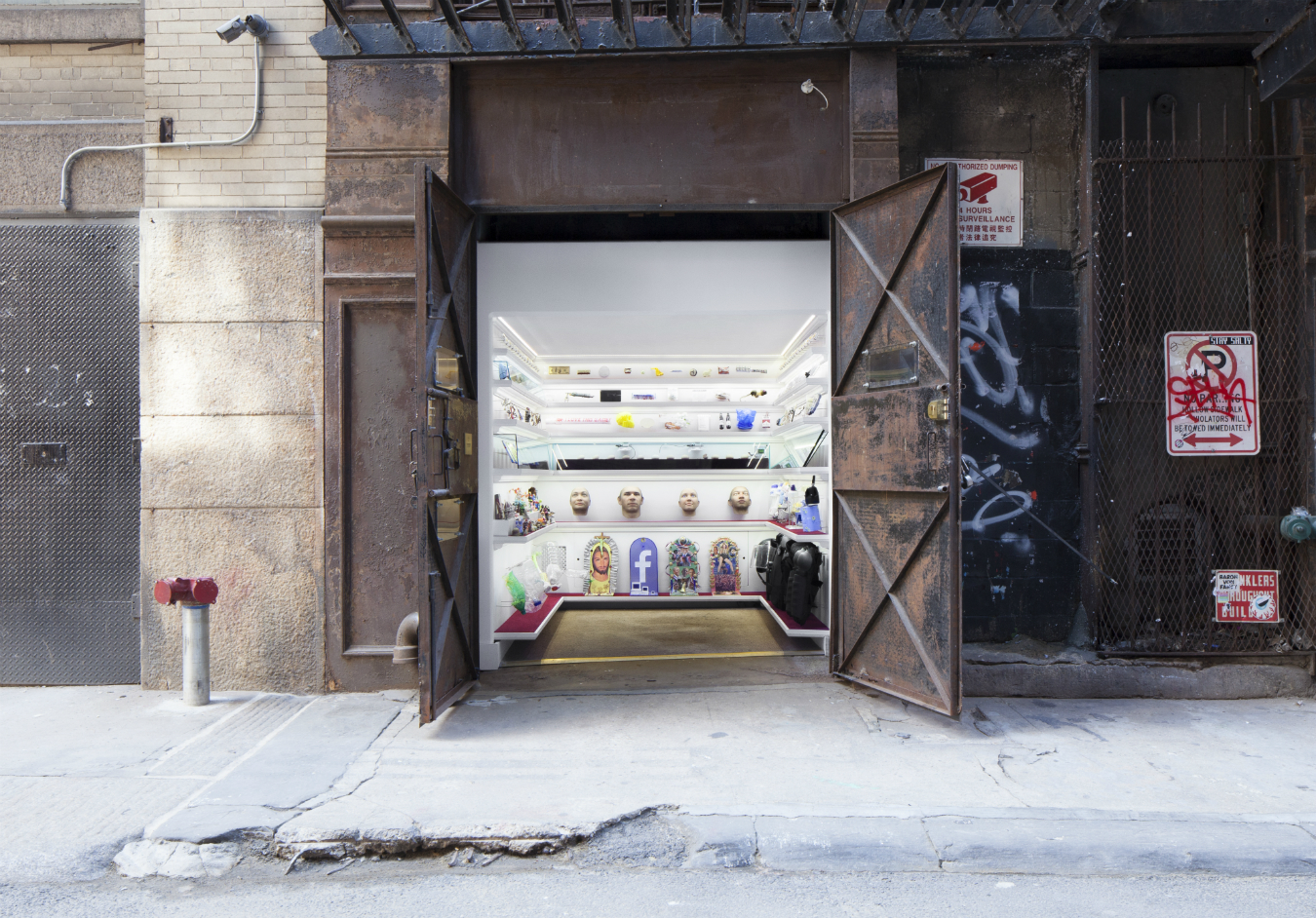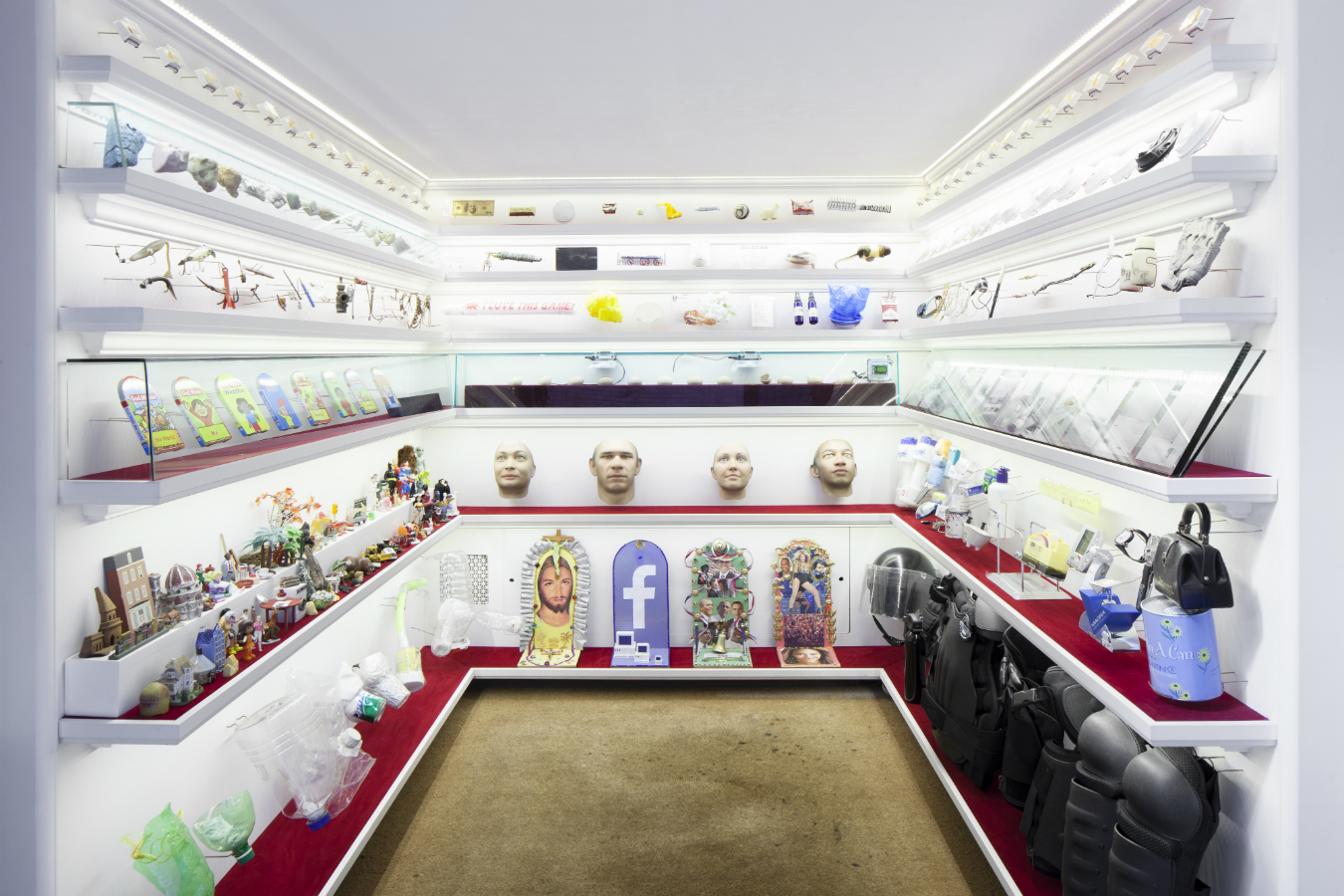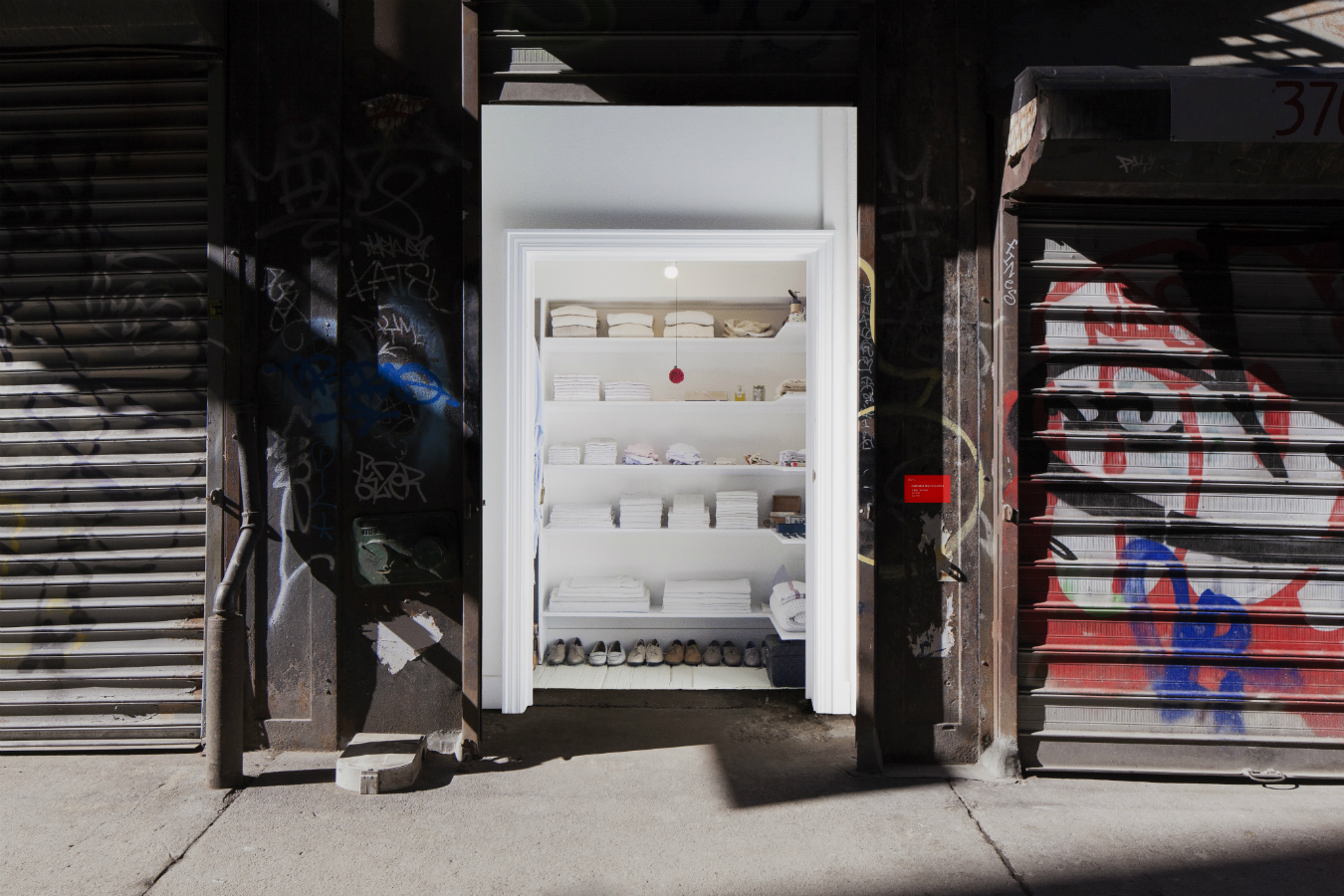On a shelf at the back of a freight lift—beneath a row of chicken eggs and above handmade shrines to Jesus of Nazareth, Facebook (our lord and saviour), Barack Obama, and Beyoncé (leader of the United States)—stands a quartet of human faces, each accompanied by the kind of things worthy of defenestration: a wad of chewed gum, a discarded cigarette butt, a soiled water glass. Which is probably how bio-hacking information artist Heather Dewey-Hagborg came upon them in the first place. After retrieving these objects, Dewey-Hagborg took them back to her lab, where she extracted what traces of DNA had been swimming in the residual saliva to determine the genetic makeup of the person who might have quenched his thirst or quashed her bad breath. The artist then ran all of this through a facial algorithm to create 3D-printed renderings.
These interpretations, part of “Stranger Visions”, make up one of the collections at New York City’s compact Mmuseumm, a trove of cultural history tucked inside a defunct elevator shaft. The space, whose façade looks onto an unremarkable Tribeca backstreet, houses a score of exhibits that comprise artefacts most would find just as unremarkable: coffee cup lids, children’s books, a KFC gift certificate. But as Alex Kalman, the brains behind the enterprise, says, “it illustrates intimately—in a very specific way and a very revealing way—who we are, what’s going on.”
So what exactly does a lineup of plastic lids say about us? “There are points around the way we define markets in a lot of the mass-produced items,” Kalman says. “In looking at the way an object of desire talks to us, we can see a perception of ourselves.” The same could be said about the cornflake index, but what about the random objects removed from people’s bodies? Surely you’d never again want to see the faucet that once impaled you, but perhaps someone else does—which is quite possibly why the doctor who removed it started the collection in the first place. By using the ordinary in a seemingly haphazard way, Mmuseumm has deliberately created something extraordinary: organized chaos.
Say what you will about a space so small attempting to showcase a scope so broad, but Mmuseumm succeeds in capturing the minutiae of everyday life as well as it does the complexities of the human spirit. Perhaps it actually has everything to with its structure and scale. Contrary to the notion of an area the size of an elevator stifling the vastly creative process of curation, there’s something to be said about being able to examine a single piece, to take a step back and see how one relates to another, to explore how that exhibit conflicts with one on the opposite side of the museum just a few steps away, and to take yet another step back in order to “look at the entire museum as a galaxy,” as Kalman says. And what can then be seen is a pastiche that holds up a mirror to the world today—the flyspecks of our yesterdays that mark the inexorable tomorrows. It is what it is; absurd as it may be, Mmuseumm is, after all, a museum.
The audio guide, a phone number visitors call while viewing the objects (through a peephole if the space is closed, which is often), explains that the portraits in “Stranger Visions” are “a process of working with some of the smallest pieces of the puzzle and extrapolating outward to create a full picture using the discovery and analyzation of the micro to see the macro.” And that’s precisely what Mmuseumm does. It paints a proverbial big picture using infinitesimal strokes, and encourages people to seek meaning in daily surroundings. You might find out something about yourself, you might learn something new—or, who knows, you might just stumble upon something small and curious in an alleyway.
__________
Mmuseumm, 4 Cortlandt Alley, between Franklin Street & White Street, New York City, United States, 10013.












